-
 Bitcoin
Bitcoin $108,262.4325
-1.40% -
 Ethereum
Ethereum $2,518.2882
-2.94% -
 Tether USDt
Tether USDt $1.0003
-0.01% -
 XRP
XRP $2.2262
-1.71% -
 BNB
BNB $653.9254
-1.55% -
 Solana
Solana $148.1036
-3.11% -
 USDC
USDC $1.0000
0.01% -
 TRON
TRON $0.2829
-1.45% -
 Dogecoin
Dogecoin $0.1639
-4.82% -
 Cardano
Cardano $0.5742
-4.43% -
 Hyperliquid
Hyperliquid $38.9506
-3.95% -
 Sui
Sui $2.9040
-4.34% -
 Bitcoin Cash
Bitcoin Cash $484.8307
-2.62% -
 Chainlink
Chainlink $13.1971
-3.73% -
 UNUS SED LEO
UNUS SED LEO $9.0822
0.51% -
 Avalanche
Avalanche $17.8613
-4.01% -
 Stellar
Stellar $0.2385
-2.26% -
 Toncoin
Toncoin $2.7570
-3.88% -
 Shiba Inu
Shiba Inu $0.0...01145
-3.99% -
 Litecoin
Litecoin $86.9999
-2.43% -
 Hedera
Hedera $0.1538
-3.90% -
 Monero
Monero $313.7554
-2.03% -
 Polkadot
Polkadot $3.3681
-5.08% -
 Dai
Dai $1.0000
0.00% -
 Ethena USDe
Ethena USDe $1.0001
-0.01% -
 Bitget Token
Bitget Token $4.4401
-2.97% -
 Uniswap
Uniswap $6.9644
-8.41% -
 Pepe
Pepe $0.0...09666
-4.79% -
 Aave
Aave $266.5686
-5.04% -
 Pi
Pi $0.4713
-4.95%
How do I set custom transaction fees on Trezor?
Learn to set custom transaction fees on your Trezor for better control over Bitcoin transactions; understand fee rates and total fees to optimize confirmation times.
Apr 11, 2025 at 12:28 am
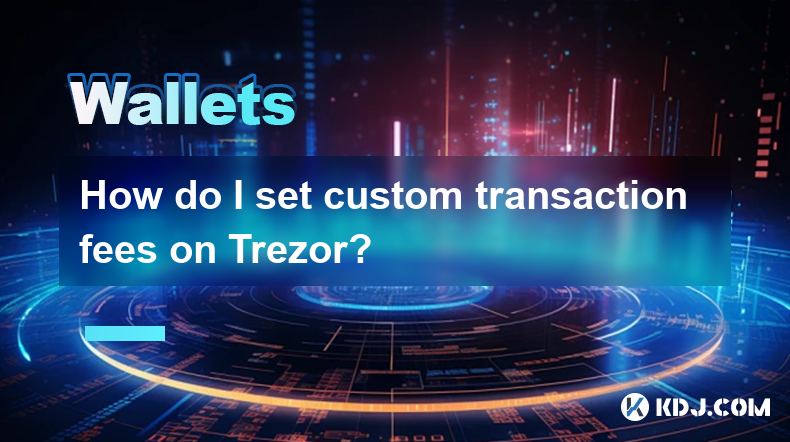
Setting custom transaction fees on a Trezor hardware wallet can be a useful skill for users who want more control over their Bitcoin transactions. This article will guide you through the process of setting custom transaction fees on your Trezor device, ensuring you understand each step and the implications of your choices.
Understanding Transaction Fees
Transaction fees are payments made to miners for processing and confirming transactions on the Bitcoin network. The fee amount can influence the speed at which your transaction is processed. Higher fees typically result in faster confirmations, while lower fees may lead to longer wait times. Trezor allows users to set custom fees to tailor their transaction experience according to their needs.
Preparing Your Trezor Device
Before you can set custom transaction fees, ensure your Trezor device is properly set up and connected to your computer. Here are the steps to prepare:
- Connect your Trezor device to your computer using the provided USB cable.
- Unlock your Trezor by entering your PIN.
- Open the Trezor Suite on your computer, which is the official software for managing your Trezor wallet.
Accessing the Send Transaction Feature
To set a custom transaction fee, you first need to initiate a transaction. Follow these steps to access the send transaction feature:
- Navigate to the 'Accounts' tab in the Trezor Suite.
- Select the Bitcoin account from which you want to send funds.
- Click on the 'Send' button to start the transaction process.
Setting a Custom Transaction Fee
Once you are in the send transaction interface, you can set a custom fee. Here’s how to do it:
- Enter the recipient's address and the amount you wish to send.
- Click on the 'Advanced options' link to reveal additional settings.
- Select 'Custom fee' from the fee options. You will see fields for 'Fee rate' and 'Total fee'.
- Enter your desired fee rate in satoshis per byte (sat/B). The total fee will automatically adjust based on the transaction size.
- Review the total fee to ensure it meets your expectations.
Understanding Fee Rate and Total Fee
When setting a custom fee, it's important to understand the difference between fee rate and total fee:
- Fee rate is the amount you are willing to pay per byte of the transaction data. It is measured in satoshis per byte (sat/B).
- Total fee is the overall fee for the transaction, calculated by multiplying the fee rate by the size of the transaction in bytes.
For example, if your transaction size is 250 bytes and you set a fee rate of 20 sat/B, the total fee would be 5,000 satoshis (250 bytes * 20 sat/B).
Confirming and Sending the Transaction
After setting your custom fee, you need to confirm and send the transaction:
- Review all transaction details, including the recipient's address, the amount, and the custom fee.
- Click 'Send' to proceed to the confirmation step on your Trezor device.
- Confirm the transaction on your Trezor by following the on-screen prompts. This typically involves pressing the buttons on your device to approve the transaction.
Monitoring Your Transaction
Once the transaction is sent, you can monitor its progress:
- Return to the 'Accounts' tab in the Trezor Suite.
- Check the transaction history to see the status of your transaction. It will show as 'Pending' until it is confirmed by the network.
- Use a blockchain explorer to track the transaction's progress by entering the transaction ID (TXID) provided by the Trezor Suite.
Frequently Asked Questions
Q: Can I change the transaction fee after sending the transaction?
A: No, once a transaction is broadcast to the Bitcoin network, the fee cannot be changed. If you need to adjust the fee, you would need to cancel the transaction (if possible) and create a new one with the desired fee.
Q: What happens if I set the fee too low?
A: If you set the fee too low, miners may not prioritize your transaction, leading to longer confirmation times. In some cases, if the fee is extremely low, the transaction might never be confirmed.
Q: How do I estimate the appropriate fee rate?
A: You can use online fee estimators like BitcoinFees or Mempool to get an idea of current network conditions and recommended fee rates. These tools provide insights based on the current state of the Bitcoin network.
Q: Is it possible to set custom fees for other cryptocurrencies on Trezor?
A: Currently, Trezor supports custom fees primarily for Bitcoin. For other cryptocurrencies, the fee structure might be different, and custom fee settings may not be available or may work differently. Always check the specific cryptocurrency's documentation on the Trezor website for detailed information.
Disclaimer:info@kdj.com
The information provided is not trading advice. kdj.com does not assume any responsibility for any investments made based on the information provided in this article. Cryptocurrencies are highly volatile and it is highly recommended that you invest with caution after thorough research!
If you believe that the content used on this website infringes your copyright, please contact us immediately (info@kdj.com) and we will delete it promptly.
- Bitcoin's Pattern Break: Are HODLers the Key to the Next Surge?
- 2025-07-04 18:50:12
- Bitcoin Price, Trump's Bill, and the $150K Dream: A NYC Take
- 2025-07-04 19:50:12
- Ethereum, LILPEPE, and the July Bounce: Will Pepe Steal ETH's Thunder?
- 2025-07-04 19:10:12
- Binance Institutional Loans: Unlocking 4x Leverage and Zero Interest for Whales
- 2025-07-04 19:15:12
- Bitcoin Bull Run: Analysts Eye Peak in Late 2025?
- 2025-07-04 19:20:13
- Pepe Indicators, Bullish Forecast: Can the Meme Coin Rally?
- 2025-07-04 19:25:12
Related knowledge
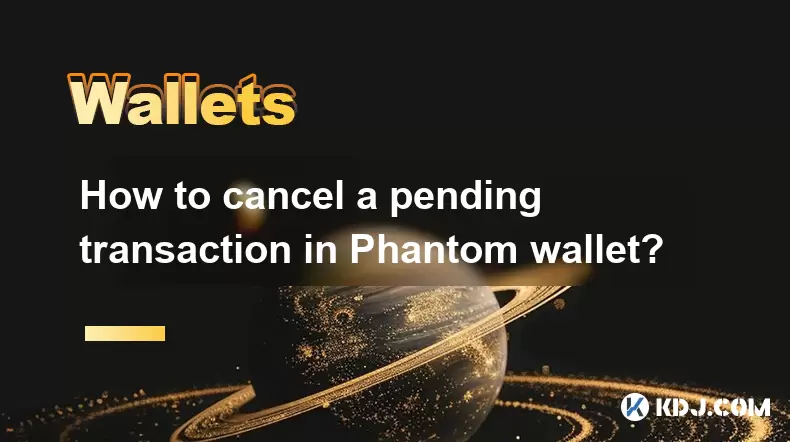
How to cancel a pending transaction in Phantom wallet?
Jul 03,2025 at 07:21pm
Understanding Pending Transactions in Phantom WalletA pending transaction in the Phantom wallet occurs when a user initiates a transfer or interaction with the Solana blockchain, but it hasn't yet been confirmed by the network. This can happen due to various reasons such as low transaction fees, network congestion, or incorrect gas settings. It's import...
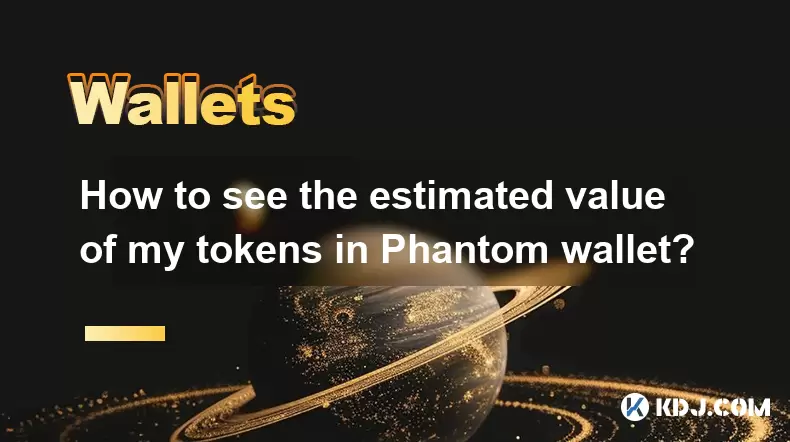
How to see the estimated value of my tokens in Phantom wallet?
Jul 04,2025 at 12:21am
What is Phantom Wallet?Phantom wallet is one of the most popular cryptocurrency wallets designed for the Solana blockchain. It allows users to store, send, receive, and manage various tokens built on Solana, including SPL tokens and NFTs. The wallet offers a user-friendly interface, making it accessible for both beginners and advanced users in the crypt...
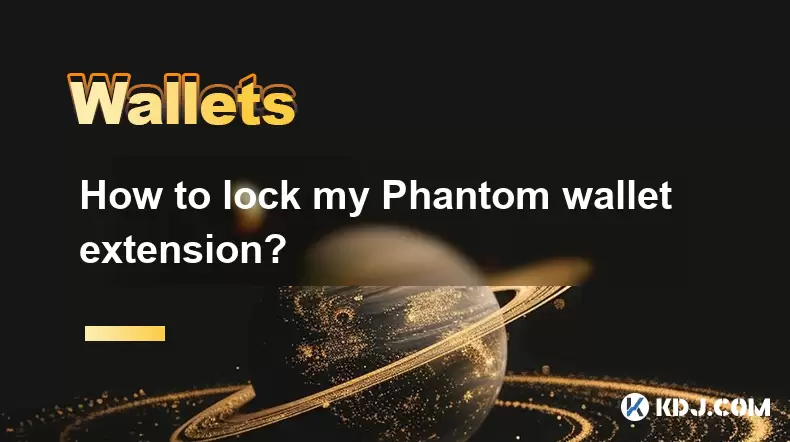
How to lock my Phantom wallet extension?
Jul 03,2025 at 11:14am
What Is the Phantom Wallet and Why Lock It?The Phantom wallet is a popular non-custodial cryptocurrency wallet designed for interacting with the Solana blockchain. Supporting both browser extensions and mobile apps, Phantom allows users to store, send, receive, and stake SOL tokens, as well as interact with decentralized applications (dApps). Securing y...

Does Phantom wallet offer two-factor authentication (2FA)?
Jul 03,2025 at 09:00am
Understanding Phantom Wallet and Its Security FeaturesPhantom wallet is a widely used non-custodial cryptocurrency wallet that supports the Solana blockchain. It allows users to store, send, receive, and interact with decentralized applications (dApps) seamlessly. As security is a top priority for any crypto wallet user, security features like two-facto...
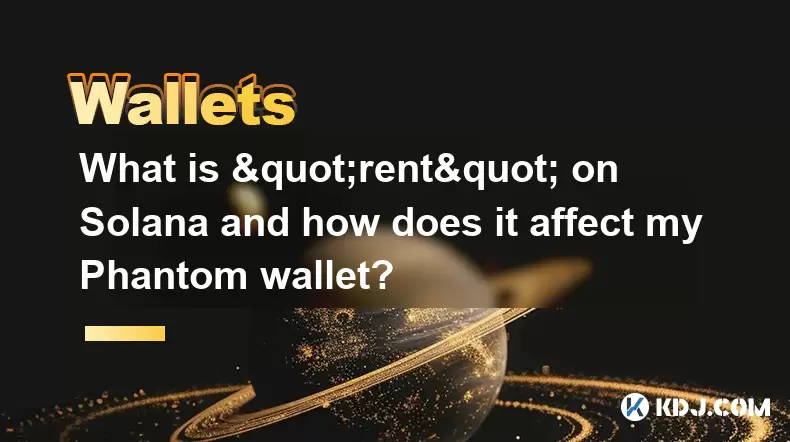
What is "rent" on Solana and how does it affect my Phantom wallet?
Jul 02,2025 at 08:35pm
Understanding 'Rent' on SolanaIn the context of Solana, the term 'rent' refers to a storage fee that users pay for maintaining data on the blockchain. Unlike Ethereum, where storage costs are paid once via gas fees during contract deployment, Solana implements a recurring cost model to ensure efficient usage of network resources. This means that any acc...
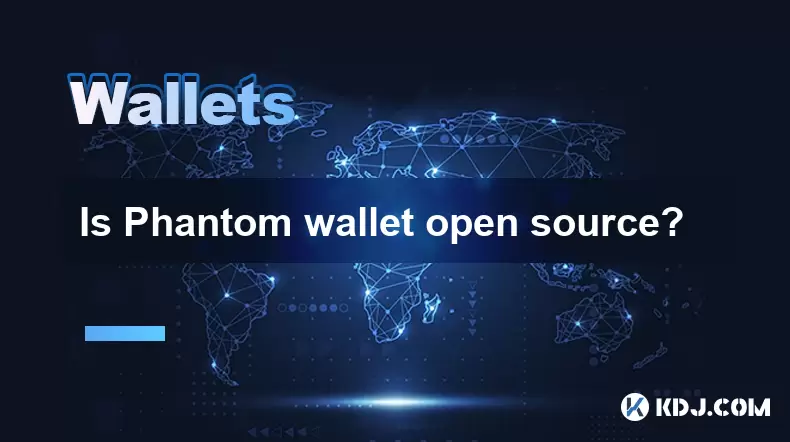
Is Phantom wallet open source?
Jul 03,2025 at 12:29am
What is Phantom Wallet?Phantom wallet is a non-custodial cryptocurrency wallet primarily designed for the Solana blockchain. It allows users to store, send, receive, and interact with decentralized applications (dApps) on the Solana network. The wallet is available as a browser extension and mobile application, offering a seamless experience for both be...

How to cancel a pending transaction in Phantom wallet?
Jul 03,2025 at 07:21pm
Understanding Pending Transactions in Phantom WalletA pending transaction in the Phantom wallet occurs when a user initiates a transfer or interaction with the Solana blockchain, but it hasn't yet been confirmed by the network. This can happen due to various reasons such as low transaction fees, network congestion, or incorrect gas settings. It's import...

How to see the estimated value of my tokens in Phantom wallet?
Jul 04,2025 at 12:21am
What is Phantom Wallet?Phantom wallet is one of the most popular cryptocurrency wallets designed for the Solana blockchain. It allows users to store, send, receive, and manage various tokens built on Solana, including SPL tokens and NFTs. The wallet offers a user-friendly interface, making it accessible for both beginners and advanced users in the crypt...

How to lock my Phantom wallet extension?
Jul 03,2025 at 11:14am
What Is the Phantom Wallet and Why Lock It?The Phantom wallet is a popular non-custodial cryptocurrency wallet designed for interacting with the Solana blockchain. Supporting both browser extensions and mobile apps, Phantom allows users to store, send, receive, and stake SOL tokens, as well as interact with decentralized applications (dApps). Securing y...

Does Phantom wallet offer two-factor authentication (2FA)?
Jul 03,2025 at 09:00am
Understanding Phantom Wallet and Its Security FeaturesPhantom wallet is a widely used non-custodial cryptocurrency wallet that supports the Solana blockchain. It allows users to store, send, receive, and interact with decentralized applications (dApps) seamlessly. As security is a top priority for any crypto wallet user, security features like two-facto...

What is "rent" on Solana and how does it affect my Phantom wallet?
Jul 02,2025 at 08:35pm
Understanding 'Rent' on SolanaIn the context of Solana, the term 'rent' refers to a storage fee that users pay for maintaining data on the blockchain. Unlike Ethereum, where storage costs are paid once via gas fees during contract deployment, Solana implements a recurring cost model to ensure efficient usage of network resources. This means that any acc...

Is Phantom wallet open source?
Jul 03,2025 at 12:29am
What is Phantom Wallet?Phantom wallet is a non-custodial cryptocurrency wallet primarily designed for the Solana blockchain. It allows users to store, send, receive, and interact with decentralized applications (dApps) on the Solana network. The wallet is available as a browser extension and mobile application, offering a seamless experience for both be...
See all articles

























































































